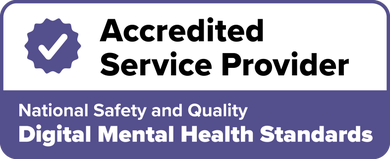Healing an insecure attachment
In a Nutshell
Insecure attachment often causes anxiety, overthinking, emotional distance, or difficulty trusting in relationships.
It can take a while and lots of inner work to heal an insecure attachment, but it’s definitely possible with self-awareness, commitment to get better, supportive relationships, and, often, therapy.
If you often feel anxious in relationships, struggle to trust others, or keep pulling away emotionally, your attachment style may be playing a role.
Attachment styles are patterns formed in childhood that influence how you connect with others as an adult. Insecure attachment can make close relationships feel overwhelming or unsafe. But thankfully, these patterns don’t have to be permanent.
With self-awareness, support, and consistent effort, you can move towards more secure, stable relationships that feel safer and more fulfilling.
What insecure attachment often looks like
Insecure attachment can show up in different ways, like oversensitivity to anything that suggests or shows rejection, worrying constantly about your partner’s feelings about you, or avoiding emotional closeness altogether. These responses are often shaped by early experiences with caregivers who were inconsistent, emotionally distant, or unpredictable.
There are three common insecure attachment styles:
Anxious attachment: You may crave closeness but worry your partner will leave. You might feel insecure unless you’re reassured often.
Avoidant attachment: You prefer independence, may feel uncomfortable with vulnerability, and often shut down during emotional moments.
Disorganised attachment: You may want intimacy but fear it at the same time. This push-pull pattern is often linked to trauma or chaotic early relationships.
In adults, insecure attachment is linked to greater emotional distress and lower life satisfaction. But the important takeaway is this: these patterns can change.
Is healing possible?
Yes, insecure attachment can be healed. Many adults shift their attachment style toward greater security through self-awareness, relationship work, and therapeutic support.
1. Build your self-awareness
Healing begins with recognising your own patterns. Do you tend to push people away or cling tightly in relationships? Do you avoid expressing emotions or constantly seek reassurance?
Reflecting on your childhood relationships can help you understand where these behaviours come from. There’s no need to blame yourself or your past, although you’re allowed to grieve past events that wounded you and your views on relationships.
However, remember that this process is more about making sense of your story so you can move forward.
2. Learn your triggers and soothing techniques
Insecure attachment can make strong emotions feel overwhelming. That’s why it’s very important to learn how to recognise and soothe your feelings, including the triggers that tend to bring them up.
Once you understand your triggers better, you can begin to respond differently, rather than automatically reacting from fear or pain.
Practising emotional regulation means developing ways to calm and ground yourself when you feel activated. This could include breathing exercises, mindfulness, or simply pausing before responding. With practice, these skills can help you feel more in control of your emotional world and better able to stay present in your relationships.
3. Practise new relational patterns
Healing from insecure attachment happens through relationships that feel emotionally safe and respectful. Being around people who are dependable, kind, and accepting can help reshape the way you understand connection.
On the other hand, remaining in relationships that are unpredictable, dismissive, or hurtful can repeat the same wounds and make it harder to trust again.
You don’t need to be in a romantic relationship to work on your attachment style. Close friendships, supportive family members, or even steady relationships in your community or workplace can all offer opportunities to practise new ways of connecting.
Pay attention to how you show up with people who feel safe. You might try sharing more honestly, staying open during a disagreement, or simply letting someone help you. These small changes can gradually shift how you relate, building a more secure sense of connection over time.
When things feel beyond repair
If you feel stuck, overwhelmed, or unsure how to change, know this: it’s not a dead end. You have the option to let someone help you.
Many people hit a point where personal efforts aren’t enough, especially if past trauma is involved. And this is where therapy can come in. Consider speaking with a therapist if:
You feel constantly anxious, distant, or overwhelmed in relationships
Old family patterns or trauma continue to affect your emotional world
You and your partner feel trapped in repeating cycles
Therapists trained in attachment-based and trauma-informed care can guide you through the healing process, offering tools and insight that help shift even long-standing patterns.
Related: Benefits of seeing a psychologist
Final thoughts
Insecure attachment can make relationships feel difficult, but it doesn’t have to stay that way. Your attachment style is not your destiny, and you can still build the kind of connections you may have always wanted.
Healing an insecure attachment is a gradual process, not a quick fix. But every step you take toward emotional safety and secure connection is meaningful.
If this article has resonated with you, consider reaching out to a therapist who understands attachment and relationships. It might feel awkward at first, but it’s often a necessary step to becoming more open and unearthing those parts of you that are still clinging to fear or insecurity.
Get Support
Overcome your relationship issues and book a free video consultation with one of our therapists
Essential Reading about Relationship Issues
Frequently Asked Questions
Yes, some people change through self-work and healthy relationships. Therapy can deepen and support this process, especially if trauma is involved.
This refers to developing a secure attachment in adulthood, even if your early relationships were insecure or chaotic. It’s a common and realistic goal.
It varies. Some changes happen within months, while deeper shifts take longer. The process isn’t linear, but progress is possible with consistent effort.
Be patient, stay consistent, learn about attachment together, and ask them what can help them feel safe and secure in your relationship. Focus on emotional safety and open communication.
That’s normal. Change takes time. Notice what triggered the response, offer yourself compassion, and keep practising the new habits you’re building. Working with a therapist can also provide more accountability and guidance.
Relationship Counsellors Available Now
QLD
Psychologist
If you're feeling overwhelmed, anxious, stuck in your head, or disconnected from yourself, you're not alone. I'm Casey Barnard, a Psychologist and Health Coach who helps ...More
QLD
Psychologist
Hello! I am an experienced therapist with expertise to support you in overcoming challenges and reaching your goals and potential. I'd love to work with you or your fam...More
QLD
Psychologist
I am a psychologist with general registration, who houses an array of life and professional experience in counselling and psychology across the lifespan. I am a massive e...More








